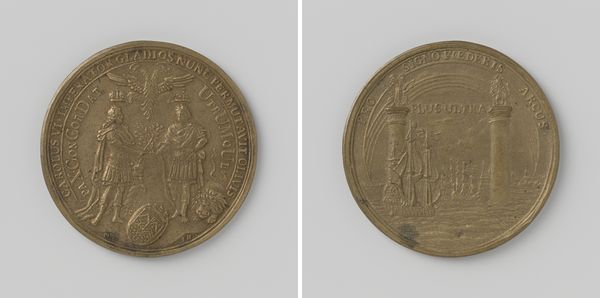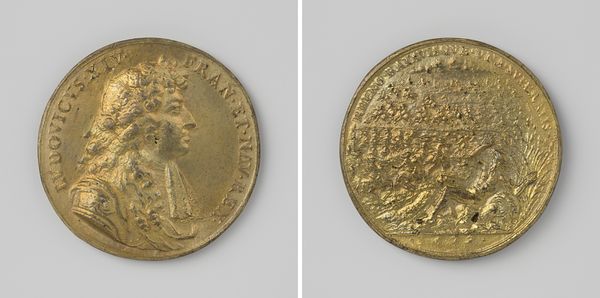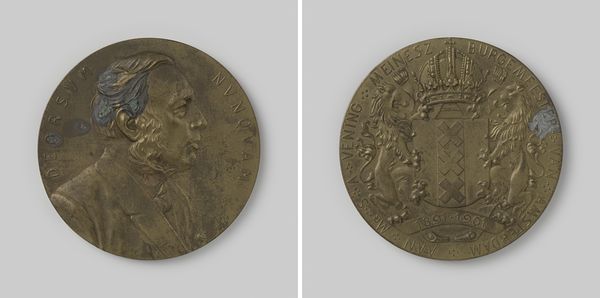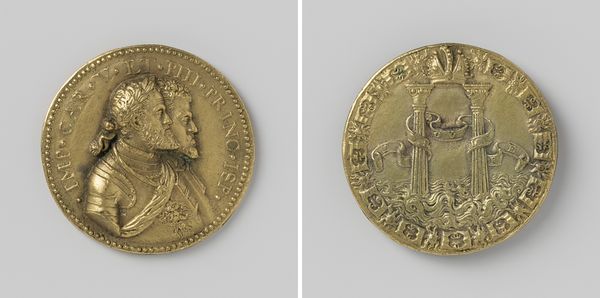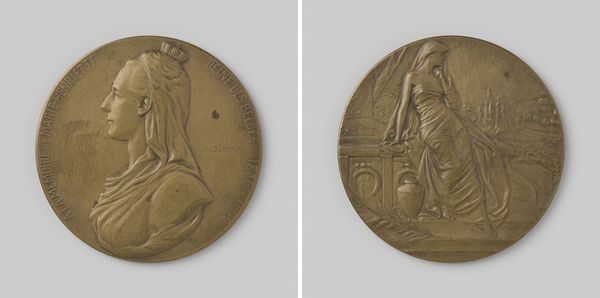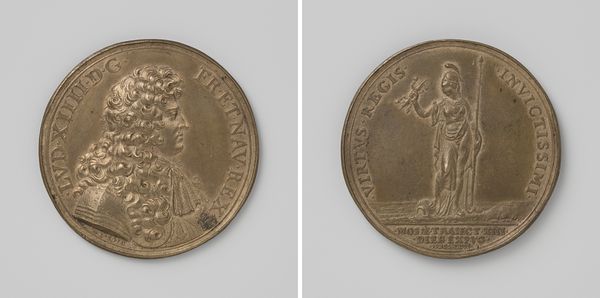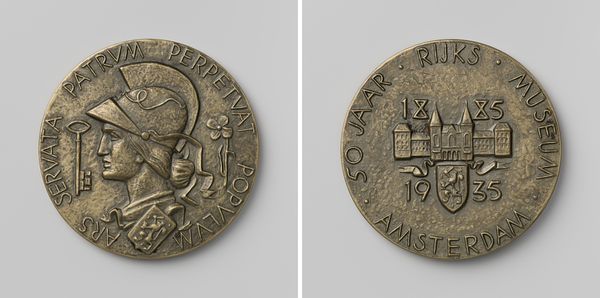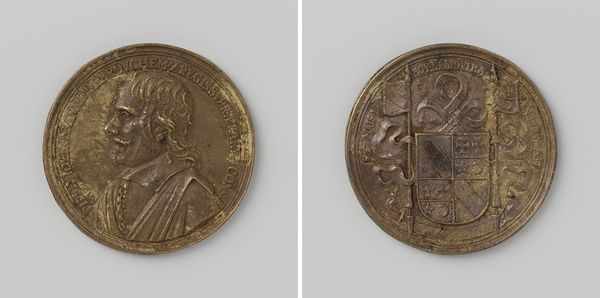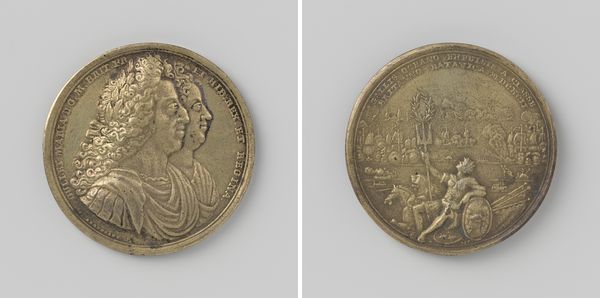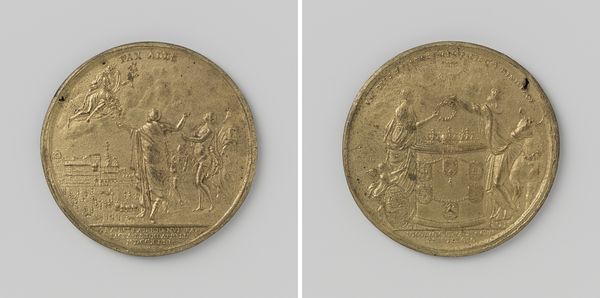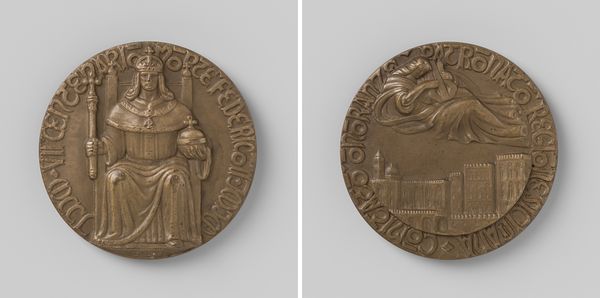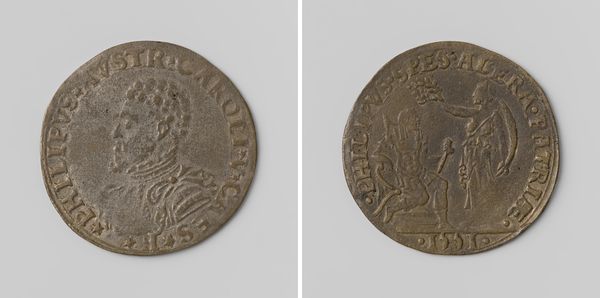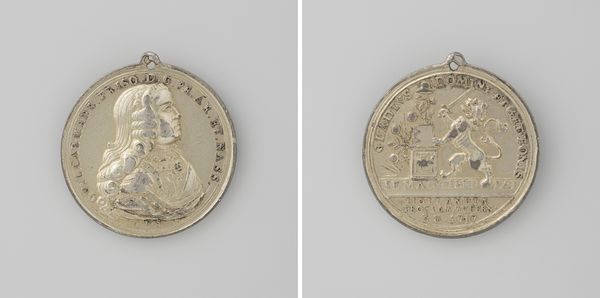
300-Jarige herdenking op de oversteek naar Engeland van Willem III en Mary Stuart 1988
0:00
0:00
Dimensions: diameter 6.2 cm, weight 76.63 cm
Copyright: Rijks Museum: Open Domain
Editor: This is a bronze medal, titled "300-Jarige herdenking op de oversteek naar Engeland van Willem III en Mary Stuart," or "300-year anniversary of the crossing to England by William III and Mary Stuart," created anonymously in 1988. It’s a beautiful object, a commemorative piece with detailed relief work on both sides. The portraits are quite striking. What's your interpretation of its significance? Curator: It’s fascinating how commemorative objects like this medal condense complex histories into portable forms. It looks back to the political dynamics of the 17th century, and forward to the moment of its creation in the late 20th. The medal commemorates William of Orange's invasion of England in 1688, the so-called Glorious Revolution. Editor: So, this wasn't simply a celebration, but a pointed statement? Curator: Exactly. Think about the political climate in 1988. Why commemorate this particular historical event at this time? Was it perhaps related to European integration or reflections on national sovereignty? Commemorative art often serves a specific agenda tied to the time of its making. Who was the medal intended for and how does the artistic representation on the object embody this public purpose? Editor: That's a perspective I hadn't considered – that a commemorative artwork could also serve as a mirror reflecting its own present. Curator: Precisely! The design choices, like the portrayal of William and Mary, and the naval scene, would have conveyed specific messages about power and national identity to its intended audience in 1988 and can still speak volumes today, don’t you think? Editor: It does make you wonder what those specific messages were and how they were received. I'll definitely look at commemorative art differently now!
Comments
No comments
Be the first to comment and join the conversation on the ultimate creative platform.
